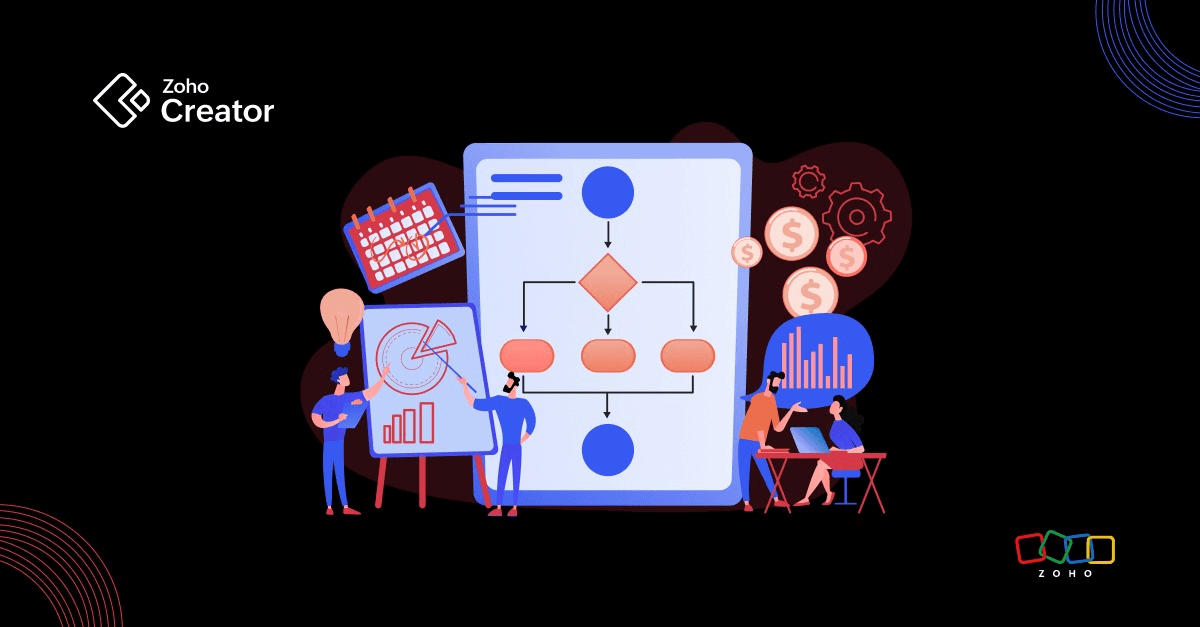- HOME
- Know Your Tech
- How your organization can adopt agile in 2022
How your organization can adopt agile in 2022
- Last Updated : April 20, 2023
- 2.5K Views
- 8 Min Read
Agile methodology has become a vital part of the IT industry, with an army of strong and loyal practitioners who swear by it.
With its unquestionable success, the next natural step is to learn how to apply it to non-IT teams, as well as other industries. In fact, many organizations have already begun doing this—companies like Spotify, Intronis, and C. H. Robinson have implemented agile on unconventional teams, from marketing and human resources, all the way up to the c-suite. And they’re seeing the results. Perhaps unsurprisingly, they’ve become case studies and trendsetters because of it. After all, agile is all about innovation, and this is exactly how it can successfully evolve.
In this article, we’re going to look at six major points to think about, if you’re moving to an agile process. It’s important to get things right, as agile comes many possibilities. However, research shows that most organizations with existing practitioners don’t always have the fundamentals of agile right. While the framework can produce great results, it can also be detrimental to an organization’s growth if it isn’t implemented properly, with an in-depth understanding of its workings.
So how does agile work?
Agile requires a deep understanding, and a lot of experience. It’s a people-dependent process, and when used effectively, it can do wonders for your organization. However, agile, when not executed properly, can result in chaos.
While it comes in many shapes and sizes, all agile processes have some things in common. Scrums, for instance—a framework for developing and sustaining complex products—are used at least five times more than other techniques. Let’s discuss the three fundamentals of scrums, to help you understand the nuances of agile practices.
Scrums are made up of:
Product owners – An emissary between the team, the stakeholders, and the customers, they’re the business representatives of the team. They define the priority of work items, and are responsible for defining the work to be done. But they don’t decide who does what. They only plan out the activities they know won’t change, and give the sprint some direction. Sprints are short cycles with which the working versions of the product are built.
Development teams – A team of 3 to 9 people are assigned to tackle an opportunity. Scrum teams are usually made up of full-time employees, and they contain cross-functional teams. Everyone on the team uses their skills to complete the tasks required to finish a job.
Scrum masters/process facilitators – This person ensures the team follows the scrum framework without any distractions. They also help the team identify and eliminate obstacles.
It’s a transparent process, and it focuses on feedback and experimentation to resolve disagreements. The team holds stand up meetings every day to keep track of their progress and work out any challenges they’re facing. Small prototypes are then tested on a few customers, and if the customers like it, they release the prototype immediately and begin preparing for their next priority.
Every aspect of agile is properly tested, and the benefits of these aspects have been thoroughly studied and documented over time. That’s why it’s good to have a well-trained team of motivated individuals using agile methodology. But most importantly, managers must be patient, focus on the core objectives of the process, and thoroughly understand the basic principles of agile.
Of course, agile isn’t the solution for every situation or organization. It comes with its own limitations.
Will Agile work for your organization?
This is the most important question to ask yourself before you implement agile across the teams at your organization. It’s an established fact that agile works well for software teams: the problems are complex, the solutions are unknown at first, modularization is possible, and rapid feedback from customers is not only feasible but encouraged.
However, this does not apply to all other teams handling routine operations. It’s, therefore, vital to determine whether a complete transition will pay off. Agile requires a big shift in thinking, a lot of training, and a drastic change in employee behavior. So it will also require a change in hiring patterns, because the process is dependent on the participation of eager individuals who are willing to take on responsibility without too much interference or handholding. A trusting environment and support are essential for execution.
The best way to do this is to prepare and study your organization or team first. See if this framework is doable and then try to implement it slowly, on a smaller scale.
Start small and then expand
Usually, changes in processes happen on an organizational level. But this is not the case with agile. It’s always implemented on a smaller scale, then outcomes are studied and modified until the desired outcome is achieved. There are no presumptive decisions made in the agile framework. Once it proves to be successful on a smaller scale, agile practitioners can act as coaches when you decide to expand. Successful practitioners will often become loyal crusaders of agile, and can’t wait to spread their knowledge. Over a period of time, you’ll better understand where you can and cannot implement agile, and if you’re confident enough, modify it according to your organization’s needs.
Customize, but carefully
From what we’ve discussed so far, it’s clear that Agile requires a lot of training and studying to initially comprehend, and the method requires many years of experience for anyone to grasp its nuances fully. So before you decide to customize agile’s widely successful practices, it may prove to be useful to implement the existing method properly.
For example, it’s proven that agile is more successful with full-time, non-rotating members. According to the Harvard Business Review, “stable teams are 60% more productive and 60% more responsive to customer input than teams that rotate members.” This is just one of the many things to consider before you decide to customize your agile process.
Of course, many organizations have successfully customized the process, so it’s possible. In fact, experienced agile practitioners should be allowed to customize their practices. Earlier, many agile teams used sticky notes on white boards (a.k.a. progress boards) they could move between three columns—to do, doing, and done. As one of Agile’s principles is to ensure complete transparency at every point in the process, this includes both their progress and their impediments. Although teams are still following this, they’ve moved to software programs to increase efficiency, as it reduces the time taken to input details, and the information is available on multiple platforms simultaneously.
Just remember, agile can take many forms at your organization, and many businesses are already adopting agile methods in new and innovative ways.
Agile for leadership
Although routine tasks, like visits to plants or performance assessments, don’t fit into the framework of agile, some pivotal activities, like strategic development and resource allocations, are suitable to agile methodologies. Employees in leadership roles reap the benefits of making the shift to agile. They’re able to have better, more informative conversations with the scrum teams in the organization. They can come together to solve common problems because of the transparency agile offers. They’re able to improve agile teams and increase organizational efficiency. All this helps employees stay work- and solution-oriented, which results in a substantial improvement in results.
A number of companies have reallocated 25% or more of selected leaders’ time from functional silos to agile leadership teams.
– Harvard Business Review
Agile methodologies implemented at this level have many benefits, and different companies have seen differing improvements. For instance, when GE rebranded itself as a digital industrial company, their COO, Brad Surak, implemented scrums in the leadership team, and after its success, began applying it to a new unit’s process. Following agile, the team’s progress board was set up in the conference room for everyone to see. The result? Surak said, “It takes the mystery out of what executives do every day. Our people want to know if we are in tune with what they care about as employees.” Apart from the usual successes that follow an agile process, this also improved employee confidence and loyalty to GE.
Agile practices give employees an opportunity to learn what their peers and colleagues are doing, exposing them to different disciplines, and fostering a feeling of mutual understanding.
Another noteworthy observation is the role of low-code in agile development, which companies are slowly integrating this into their process. In the “digital for survival” era, it’s prudent for businesses to seek technological solutions wherever possible. This is organically happening in many areas of business, but low-code is a gold mine that hasn’t been fully utilized yet.
To begin with, low-code works well with the speed and complexity of a sprint. Apart from taking care of mundane aspects of software development, a low-code platform will enable a developer to quickly build complete applications that can span multiple user experiences, like web or mobile. It also offers the possibility of active prototyping, where the work can be saved for the actual development.
At this point, the question is no longer about embracing agile, it’s really about overcoming existing barriers to create and maintain a strong agile process.
Common agile barriers
The biggest problem for an organization that uses agile is the tension between the teams that use agile and the rest of the organization. While there are other barriers that organizations face, over the years, some techniques have been developed to help overcome them:
Align your teams – Even if the rest of the teams aren’t following Agile, ensure that all of them have the same priorities. That is, when there’s a project on hand, the order of priorities should be the same everywhere. This will make sure that everyone is in the same boat.
Change roles, not structures – Creating cross-functional teams doesn’t mean you have to make organization-level structural changes. Granted, an empowered cross-functional team requires some sort of matrix arrangement, but the solution lies in working together and not working separately, in isolation.
One boss for each decision – It’s important to have one decision maker in agile, because they will commission cross-functional teams, oversee the process end-to-end, and approve the team’s decisions. Plus, for organizations the solution is not second-guessing the product owner in charge of the process, but changing them if you don’t like the results.
Apart from these few mentioned above, it’s also important to focus on the team’s collective intelligence, rather than on individual intelligence, as agile focuses on using process facilitators to improve the team’s overall output. Rather than focusing on the people, it focuses on the impediments. There are many ways to combat the challenges faced while using agile.
The payoff of an effective agile system is far-reaching, which is why the IT industry has fully embraced this methodology, and why it has played a pivotal role in revolutionizing the IT industry. Now it’s up to the executives of other industries to adapt and integrate it into their organizations. Those who understand agile well, know just how substantially it can accelerate an organization’s growth.
 Tejas Gadhia
Tejas GadhiaTejas is an evangelist at Zoho with his focus set at enabling developers build powerful solutions using Zoho's tech stack.



